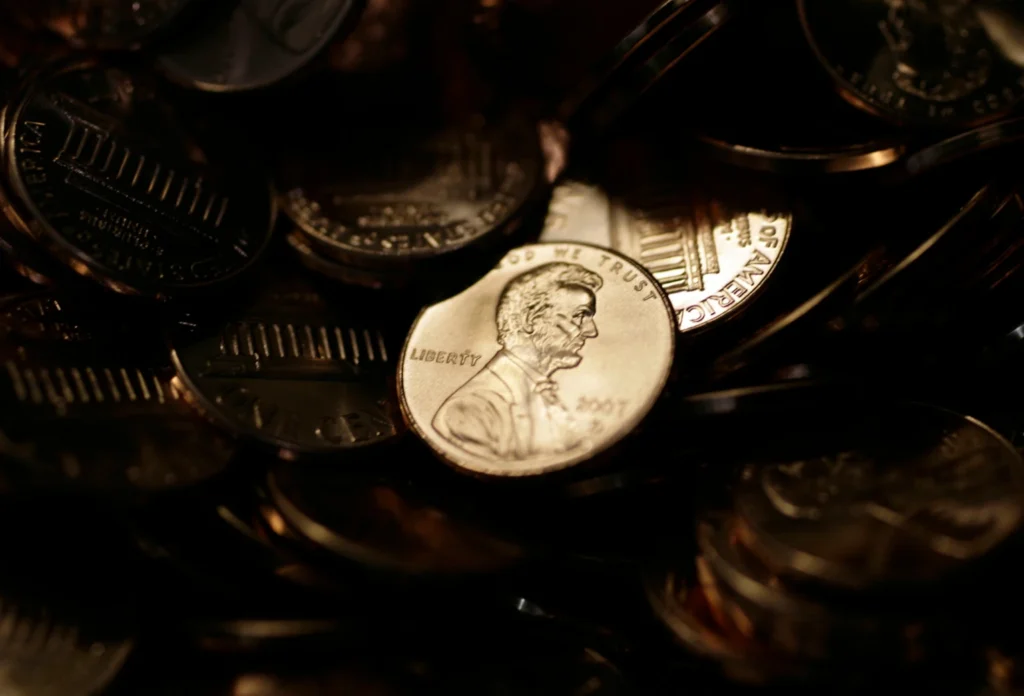New York — Months after the U.S. government abruptly halted production of the penny, retailers, banks, and consumers across the country are facing mounting challenges as supplies of the smallest denomination coin continue to dwindle.
President Donald Trump ordered the U.S. Mint earlier this year to cease production of pennies, citing rising manufacturing costs. The decision, made without a formal transition plan, is now forcing merchants to round down transactions, ration remaining coin supplies, and plead with customers for exact change.
Retailers Feeling the Pinch
Some convenience chains are running dangerously low. Pennsylvania-based Sheetz recently offered free sodas to anyone bringing in a hundred pennies. Other retailers say the shortage is costing them millions in lost revenue because they are opting to round down rather than risk lawsuits over cash-pricing laws.
“It’s a chunk of change,” said Dylan Jeon, senior director of government relations for the National Retail Federation. “We knew pennies were inefficient, but removing them this fast has consequences.”
Banks Running Dry
Banks have largely exhausted their existing penny inventories. According to Troy Richards, president of Louisiana-based Guaranty Bank & Trust Co., his branches received an unexpected warning in late summer.
“We got an email from the Federal Reserve saying penny shipments would be curtailed,” Richards said. “We had no idea shipments had already stopped. Our $1,800 supply disappeared in two weeks.”
Branches are now holding small amounts for check-cashers — and turning away everyone else.
Why the Sudden Shortage?
The issue isn’t new. For years, the Mint spent more than the penny’s face value to manufacture it — 3.7 cents per penny in 2024, according to government data. Nickels cost even more.
Despite this, pennies remained the most frequently minted coin — over 3.23 billion were produced in 2024 alone. But most never make it back into circulation. Americans toss them in jars, glove compartments, and decorative projects, forcing the Mint to replace them annually.
This year, the Treasury halted its final order of copper-zinc coin blanks in May. By June, the final batch of pennies was struck. By August, they were distributed — and began disappearing quickly.
The Treasury now estimates taxpayers will save $56 million annually by eliminating the coin.
A Legal Gray Area
The absence of federal guidance is creating a patchwork of conflicting rules. In several states, rounding cash purchases up could violate laws requiring equal treatment for cash, debit, and credit transactions.
As a result, many stores are rounding down — costing Midwest chain Kwik Trip an estimated $3 million annually.
Some stores are encouraging customers to donate the leftover cents to charity to avoid handling pennies altogether.
A proposal known as the Common Cents Act would standardize rounding nationwide, but it remains stalled in Congress. While helpful to retailers, critics warn it could increase costs for low-income consumers who rely heavily on cash.
A System Under Strain
Coin distribution is handled through Federal Reserve-affiliated coin terminals, many operated by armored carrier companies. Roughly one-third of these terminals are now closed to penny deposits and withdrawals, making regional shortages worse.
Areas with surplus pennies can’t easily send them to regions in need.
Lessons From Abroad
Other countries have successfully phased out low-value coins — but slowly. Canada announced its transition in 2012 and still redeems pennies a decade later. The U.K.’s decimalization took years of planning.
By contrast, the U.S. change came abruptly, without congressional debate or clear direction.
Industry Pushback
Retailers and bankers — rarely allies on policy matters — are jointly calling on Washington to intervene.
“We have been advocating for abolition of the penny for 30 years,” said Jeff Lenard of the National Association of Convenience Stores. “But this is not the way we wanted it to go. We just need clarity.”
What Comes Next
With the holiday shopping season underway, pressure on coin supplies will intensify. Cash transactions — still common in small towns, rural regions, and among older Americans — risk becoming a logistical headache.
The Federal Reserve says coin distribution policies will “vary over time as inventory is depleted,” offering little reassurance to retailers already struggling.
For now, Americans are being encouraged to empty their penny jars. But without nationwide guidance, the smallest coin in the U.S. monetary system may continue to leave a very large problem behind.

